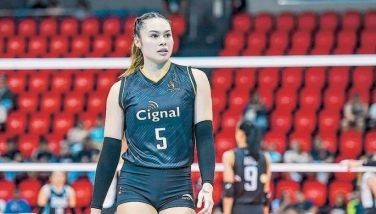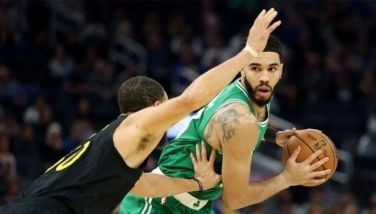Asian import a Japanese option
The professional basketball league in Japan is called the B.League and it’s split into three divisions – the first with 20 teams, the second with 16 and the third with 11 .The first division plays a 60-game regular season and the top eight placers advance to the playoffs. Each team in the first and second divisions are allowed to enlist up to three foreign players but only two may be on the court at the same time. Aside from the three imports, a team may recruit a naturalized player or a foreigner with a Japanese passport. The team has the option to sign up a naturalized player or an Asian import.
This past season, the B.League brought in imports from all over the world, making it virtually a United Nations of the game. Players from the US, Bahamas, Uruguay, Australia, Malta, Spain, Hungary, Congo, Cuba, Venezuela, Senegal, Argentina, Zimbabwe, Nigeria, Serbia, Finland, England, South Africa and Canada invaded the Japanese shores. From Asia, only two imports were signed up – Thirdy Ravena of the Philippines and Yang Jae Min of South Korea. Naturalized players include Ira Brown, Nick Fazekas, Gavin Edwards and Ryan Rossiter. Among the naturalized players who’ve previously suited up for the Japanese national team were Dan Weiss, Eric McArthur and J. R. Henderson (renamed Sakuragi).
The salary range for imports in the B.League is from $100,000 to $400,000 a year. If a PBA player earning the max salary of P420,000 a month is offered the minimum of $100,000 to move to the B.League, it’s not worth considering. But if the offer is $200,000 or P800,000 a month, you’re likely to think it over. Asian imports may or may not earn as much as reinforcements from other countries but they’re allowed to play the entire game like a naturalized import.
Thirdy’s brother Kiefer has reportedly come to terms to play in the B.League next season. He recently inked a three-year renewal with NLEX. While it’s a live contract, Kiefer could be released by NLEX to play in the B.League but it may not be that easy. Kiefer’s Uniform Player Contract is binding with the PBA, too. For Kiefer to move to Japan, he will require clearance from FIBA. And for FIBA to approve the transfer, it must seek approval from SBP as the national federation. The PBA is represented in SBP so before SBP can approve or disapprove, it will consult with the PBA. Players who may wish to opt out of a PBA contract to move to a league in another country must secure FIBA clearance.
From the PBA standpoint, players can’t just sign contracts and later decide to renege. They’re professional athletes bound by legal contracts. If a team allows a player with a live contract to go on a leave of absence and the PBA gives its clearance, there should be some kind of compensation. The hiring team from abroad should pay the PBA a transfer fee and the PBA team at least the cost of the player’s one-year salary. Whatever is left in the balance of the years in the player’s PBA contract will remain regardless of how long is his leave of absence. Perhaps, the player may sign a contract in another country only for a year but renewable yearly along with the compensation for the PBA and his mother team.
Japanese-American Jo Kurino-Dews, born in Japan to an American military father and a Japanese mother, said basketball is on the upswing in Japan. He grew up in Japan, was educated in the US, played for the University of Mount Olive in D-2 (Justin Melton’s alma mater) then saw action in Japan from 2003 to 2018. Now, he’s an assistant coach with the B.League team Shinshu.
“With Rui Hachimura and Yuta Watanabe in the NBA, young Japanese kids are tuning in more to basketball,” said Kurino-Dews in the EASL Clubhouse platform the other day. “There used to be an objection to imports playing in Japan because local bigs wouldn’t get to develop but it was a challenge for them to improve. We don’t want to baby our local bigs. It’s like our Takeuchi brothers. As long as there aren’t any other bigs better than them, they’ll stay with the national team. A lot of our naturalized players have settled in Japan like Dan Weiss who works with Converse Japan and Sakuragi who’s coaching in D-2. I started a basketball academy in Nagoya and now it’s in Okinawa. I teach old-school basketball, the essence of the game, screening the proper way, posting up, creating mid-range shots, defensive basics, tempo. When the EASL starts, I think the home-and-away format will be exciting. Japanese fans are loud but respectful, not rowdy, not hostile. Chinese and Filipino fans are really passionate and rabid so it’ll be interesting how teams from Korea and Japan respond.”
Kurino-Dews, 40, said Japan is gearing up for the 2023 FIBA World Cup. “We’re developing 6-6 guys as wings,” he said. “We’ve been developing our national team the last eight years. We’ve got Rui, Yuta, Yudai Baba in Australia, Keisei Tominaga in Nebraska, Yuki Togashi and the rest of the guys to make us very competitive.”
- Latest
- Trending






























